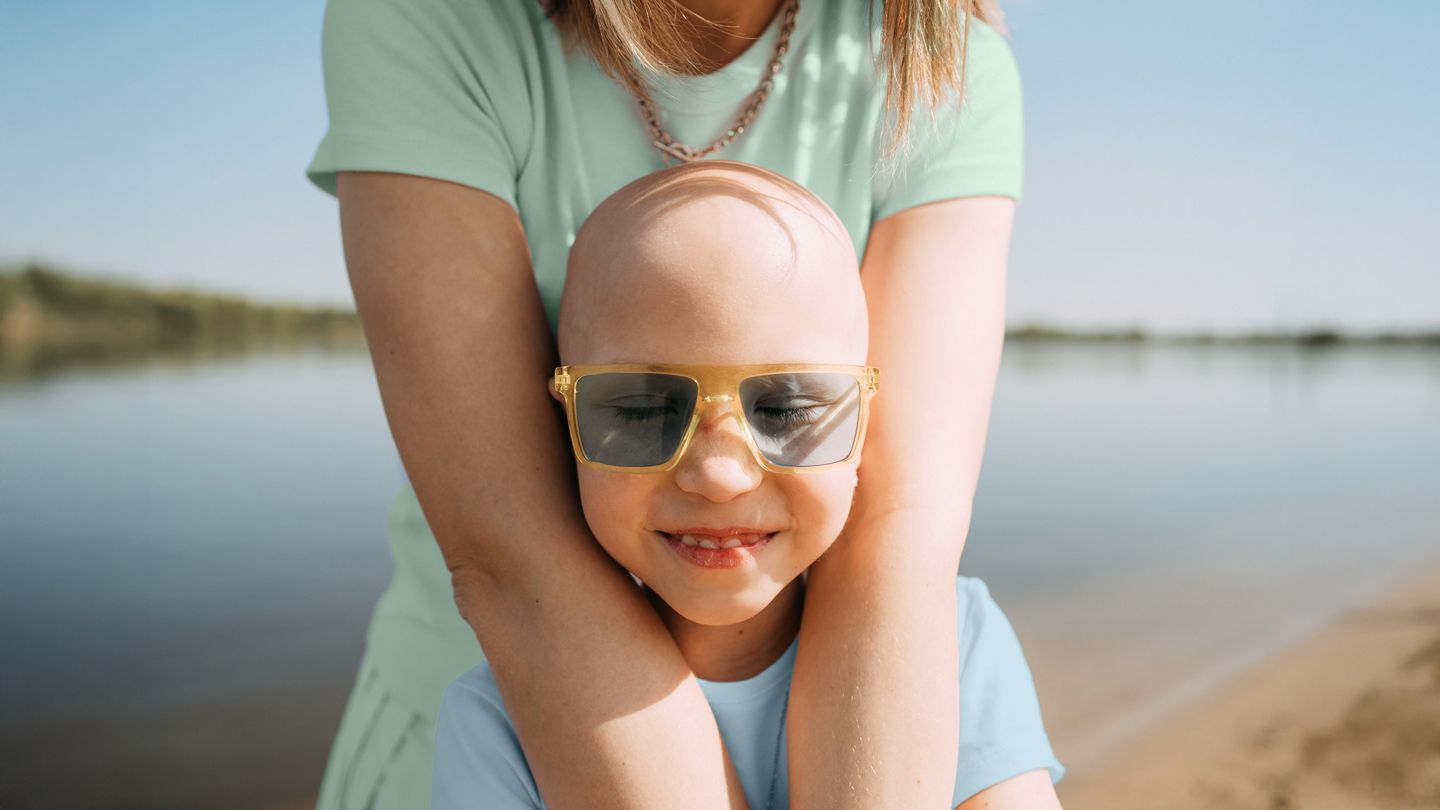If your child has recently developed small, circular bald patches on their scalp, they may have alopecia areata, an autoimmune condition that attacks the body’s hair follicles and causes patchy hair loss.
In all likelihood, the hair loss will only occur in a handful of spots, but occasionally, all of the hair can fall out. Thankfully, alopecia isn’t linked to other medical problems. “While the hair loss can be very visible, children are generally healthy otherwise,” says Annie Grossberg, MD, director of the pediatric dermatology division at Johns Hopkins Medicine in Baltimore.
Here are a few things to keep in mind about the condition, including what causes it and which treatments have been shown to help.
1. There’s Nothing You or Your Child Did to ‘Cause’ It
It can be easy to beat yourself up when something happens to your child. You may wonder what you (or they) may have done to unintentionally make this happen. But alopecia isn’t anyone’s fault. “It’s not caused by external factors or anything the parents or child did,” says Dr. Grossberg. That includes tight hairstyles (for example, braids or ponytails) and frequent brushing, she adds.
Instead, alopecia areata is an autoimmune condition where the immune system mistakes hair follicles for foreign invaders (such as bacteria or a virus). It responds by attacking the hair follicles, which makes the follicles inflamed and leads to hair loss. Experts are still learning about what sets off the condition, but it’s thought to be a combination of genetic and environmental factors.
“Infections, chronic or acute illness, or emotional stressors sometimes act as triggers, but there isn’t always an identifiable cause,” says Grossberg.
2. It’s Normal for Your Child’s Scalp to Look Patchy
Alopecia causes round or oval-shaped bald spots that can be scattered around the scalp. “The patches tend to be completely smooth when they are first discovered, with no broken hairs or stubble,” says Grossberg. In some cases, patches may join together to form larger bald areas. About 5 percent of children with alopecia will progressively lose all of their hair. When that happens, experts refer to the condition as alopecia totalis.
3. The Hair Usually Grows Back
Hair loss caused by alopecia areata is usually only temporary. In most cases, you’ll start to notice regrowth within several months, even without treatment. “Hair regrowth may start as hairs that appear finer or lighter in color and then thicken and darken over time,” Grossberg says.
That said, it can be tough for the doctor to predict exactly how long it will take for your child’s hair to start coming back, partly because there’s limited data on alopecia areata in children. It’s also possible for kids to have relapses (sometimes in new areas of the scalp) after their hair has grown back, she says.
4. It Can Affect Fingernails and Toenails
The inflammation that affects your child’s hair follicles can also affect fingernails and toenails, especially when the hair loss is severe. As a result, their nails might develop white spots or become pitted, prone to cracking or splitting, or thin.
In many cases, both the parents and the children aren’t bothered — or even aware — of these changes, so no treatment is usually necessary, says Grossberg. But if the nails do become bothersome or uncomfortable, systemic medications that address hair loss can help, as can topical treatments applied directly to your child’s nails.
5. You Can Speed Up Hair Regrowth With Treatment
“Alopecia areata isn’t medically dangerous, so treatment is not mandatory,” says Grossberg. But medications, such as topical steroids, steroid injections, and oral minoxidil, can help with hair regrowth. For more severe hair loss, the doctor may recommend a biologic medication or Janus kinase inhibitor, depending on your child’s age.
Keep in mind that these treatments aren’t a cure for alopecia, though. It’s possible that your child may lose hair again down the road.
The decision of whether to treat your child or allow their hair to grow back on its own largely depends on how your child feels about the alopecia. It’s normal for school-age kids and teens to feel self-conscious and want to do what they can to get their hair back as quickly as possible. But younger children might not worry as much about how their hair or scalp looks, so treatment isn’t always necessary.
“The ‘best’ treatment balances the extent of hair loss, age, side effects of various medications, and the psychosocial toll the condition takes on the child,” says Grossberg. Your child’s pediatrician or dermatologist can help. Together, you can decide on the best way to manage alopecia.
The Takeaway
- Alopecia, although distressing, isn’t medically harmful or caused by anything you or your child did.
- Most kids’ hair will grow back over time, but it’s normal for it to look patchy or different in the meantime.
- Treatments, including topical steroids and oral minoxidil, can help speed up the process of hair regrowth.
Read the full article here




